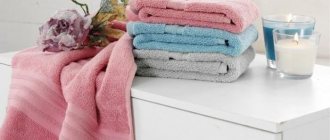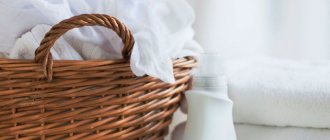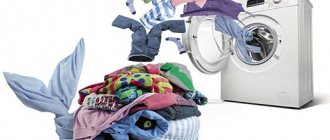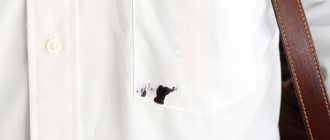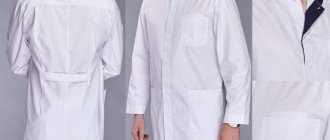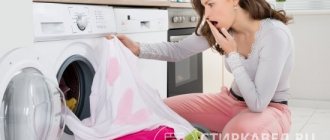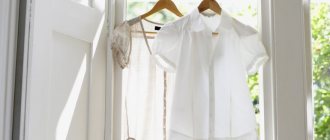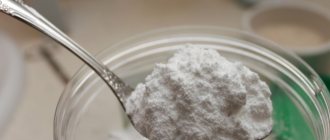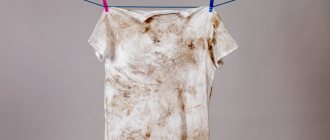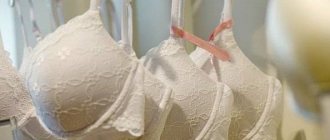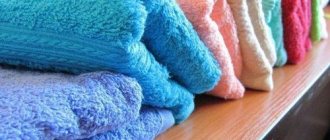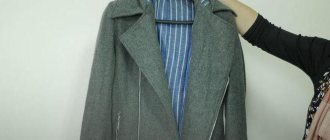White things need care more than others, as they are more susceptible to various kinds of dirt than colored ones. In addition, even with careful wear, over time, white fabric loses its original whiteness and acquires a grayish or yellowish tint.
Loading laundry into the machine
Our grandmothers fought a similar problem by boiling and boiling. This method of whitening remains effective to this day, but takes too much time. With the advent of new, almost fully automated washing machines, the procedure for washing white clothes has become much easier. Still, there are certain principles that must be taken into account if you are going to bleach in an automatic washing machine. Then white linen will retain its original shine and cleanliness for a long time.
Machine washable bleaching
There is an opinion among many housewives that tulle cannot be washed and bleached in an automatic machine, since the fabric is too delicate. In old machines it was really impossible to wash thin materials; they could become hopelessly damaged, even torn. A modern automatic machine is multifunctional: it will remove all dirt, bleach, and preserve the integrity of the fabric fibers.
How to wash white tulle in order to bleach it in a washing machine, and the curtain will shine clean again? Manufacturers of automatic machines have different programs for gentle washing, but each of them has a mode that will carefully wash and whiten thin tulle:
- silk;
- wool;
- for delicate linen;
- delicate;
- handwash.
Each of these programs is suitable for the finest tulle.
The temperature (not higher than 30°C) is set automatically, except for hand wash mode.
General recommendations
After removing the tulle curtains from the windows, they are first shaken out of dust.
- Before loading, the tulle is carefully folded into a small envelope, rather than somehow stuffed into a drum.
- It is more convenient to use a mesh bag. If it is not there, skillful housewives place the tulle in a small pillowcase and make a few stitches so that the fabric does not move out.
- Conventional powders are not suitable for tulle curtains, since the chemical components of the composition are aggressive to delicate fabrics. Wash with gentle liquid powders, gels, shampoos.
- For tulle, it is necessary to halve the amount of detergent and set the additional rinse mode, as a lot of foam is formed.
- The program is installed without squeezing, nor is it squeezing manually. Shake lightly and hang in place. The tulle will dry, there will be no creases or folds left - no need to iron.
If the fabric is such that it is impossible to do without ironing, a lukewarm iron is suitable for fragile tulle curtains.
Many housewives, speaking on forums, advise soaking the tulle for several hours in a basin or directly in the car to remove stubborn dirt. Then the water is drained and the washing program is set.
What bleaching products to use
Among household chemical products there are many different whitening products.
- Liquid containing chlorine. They bleach well, but they destroy the fabric and have a detrimental effect on machine parts. To whiten gray tulle or get rid of yellowness, do not use chlorine bleach.
- Dry (in powder form) and liquid oxygen bleaches. Effective in forty-degree water, but expensive.
- Optical brighteners. They contain special dyes. They create an optical illusion: the yellowness is not bleached, but tinted. The products can be used in the washing machine.
To return tulle to its snow-white color, the most suitable product is oxygen bleach, the active substance of which is hydrogen peroxide.
Advantages and disadvantages of "Whiteness"
White
“Whiteness”, due to its versatility, is as popular as it was decades ago. This tool really has many advantages:
- works in both hot and cold water;
- used for disinfection, whitening, stain removal;
- quickly dissolves in water;
- It is characterized by economical use and low price.
“Whiteness” is a product that has been proven over the years and can be used to clean a washing machine. But this also comes with many disadvantages:
- An open container with a substance must be used quickly. After 2-3 months, the product will lose its effect.
- it has a characteristic pungent odor, which is not pleasant to everyone;
- the product may cause severe allergic reactions;
- do not use on delicate fabrics;
- in automatic machines, the product must be used very carefully, and the instructions must contain a direct indication of the possibility of using chlorine-containing bleaches.
Do you wash by hand?
Oh yes! No
Brighteners for tulle
In many machines, in the cuvette for filling the powder there is a cell with a bleaching mode (a triangle is drawn).
At home, when machine washing delicate tulle, housewives use the most well-known bleaches:
- Ase, Bos;
- Suprim, Sarma;
- Amway, Dr Berkmann;
- Nanny, Eared Nanny;
- Persol, Parus.
Household chemical stores offer a wide selection of whitening products.
If the machine does not have a compartment where the bleach is placed, the curtains are washed first and then bleached.
Bleach powder (dry)
- Washing powder is effective at temperatures from 30°C, and bleaches are effective from 60°C to 90°C.
- When using expensive bleach that works at 40°C, first turn on the soaking mode.
- Pour powder into the compartment, and bleach into another compartment, set the desired washing program.
Liquid bleaches
When the washing powder has dissolved, liquid bleach is poured into the second cuvette (rinse aid compartment). Before use, it is diluted with water. Powder containing enzymes loses its whitening properties when combined with other whitening agents.
Many housewives use the old fashioned method: bleach the tulle by adding 2 tbsp to the cell with washing powder. spoons of coarse salt or hydrogen peroxide (10 tablets). Tulle curtains are bleached during the washing phase.
It is important to remember that frequent bleaching (manual and machine) spoils the structure of the fabric, even the strongest.
In addition to this method, there are many folk recipes for bleaching tulle with pre-soaking and manual bleaching after washing. They use products available to every housewife: salt, laundry soap, blue, brilliant green, potassium permanganate, hydrogen peroxide and others.
What to do if you don't have bleach?
10 life hacks on how to make things white if you don't have bleach
- Boiling Are you still boiling? ...
- Hydrogen peroxide Hydrogen peroxide works well for yellowing white things. ...
- Baking soda Many people know about the endless possibilities of soda. ...
- Table salt You can try to fight for the whiteness of fabric using table salt. ...
- Laundry soap …
- Vinegar …
- Potassium permanganate...
- Blue
14 Dec. 2022
Whitening bed linen in an automatic machine
Bleaching bed linens in a machine is more convenient than by hand due to the large size of sheets and duvet covers. And it doesn’t take much time, since bleaching occurs at the washing stage.
It is important to consider the composition of the fabric from which the bed linen is made (cotton, silk, calico and others), since each material has different bleaching conditions.
For example, silk cannot be washed in hot water with chlorine bleach, which will ruin the delicate fabric, but cotton sheets can.
The tags on each item indicate the permissible washing temperature. The instructions on the label must be followed.
Bedding can be easily bleached in the washing machine:
- choose the type of bleach, taking into account the composition of the fabric (chlorine is only suitable for cotton);
- load laundry into the drum;
- pour washing powder into the cuvette and dry detergent into the bleach compartment;
- set the desired washing mode.
Liquid bleach is poured in after the machine has filled with water.
How to bleach correctly
For lightening fabric, a washing machine is a very practical thing, since, firstly, it is convenient to bleach large amounts of fabric such as tulle curtains and bed linen, and secondly, when the temperature during washing reaches 90°C, you do not come into contact with capacity, so you don’t risk getting burned.
Whitening powder
As we have already found out, the optimal one for use in a washing machine is oxygen bleach, in which hydrogen peroxide acts as the active ingredient. Many automatic washing machines are equipped with a special compartment for such additives in the detergent tray and even a built-in “Whitening” program. This makes the task even easier. The whitening instructions are as follows:
- First, the laundry is sorted by type of fabric. Panties, T-shirts and bodices are always bleached separately; tulle cannot be bleached together with clothes or bed linen with towels. Different types of cotton clothing can be bleached together, such as T-shirts and socks. It is absolutely forbidden to wash white things with colored ones! The selected laundry is loaded into the drum of the machine.
- Powder and bleach are poured into the detergent container into the appropriate compartments. The bleach compartment, if present, is usually indicated by a triangle, and the powder compartment by the Roman numeral two.
- All that remains is to choose the washing mode based on what fabric the items are made of. For tulle curtains, silk blouses or sheets, you should only select the “Delicate Fabrics” mode. For cotton bed linen, clothing and towels, choose a mode for dense fabrics with a temperature of 60-90°. You should first study the information on the product labels, which indicate the washing temperature allowed for a given item.
- Start the program and wait for the wash to finish.
Washing white items
Features of bleaching laundry from different fabrics
An important factor in the effectiveness of washing and bleaching sheets and duvet covers is temperature.
- The “Cotton” program is set to whiten bed linen: satin, poplin, chintz, jacquard and other natural fabrics. The mode provides for a high washing temperature (90°C) with boiling, after which white linen shines with cleanliness and freshness, since boiling is one of the proven methods of bleaching.
- To obtain the best result, use the soak function with pre-wash.
- Silk linen is washed and bleached at a temperature not exceeding 40°C.
- For synthetic sheets there is a special “Synthetic” mode.
How to prevent re-staining?
White items change their original color due to non-compliance with washing rules. To avoid this problem again after the whitening procedure, you need to adhere to several rules:
- Do not wash white and colored linen together;
- do not wash old and new items together - even if a recently purchased item has a small colored insert, it may fade;
- rinse the laundry thoroughly after washing;
- Do not dry things on heating devices or in the sun. Because of this, they may turn yellow.
If it is impossible to avoid washing white and black items together, then you need to use color-catching napkins (Chameleon, Dr. Beckmann and others). Their average cost is 300 rubles.
You can learn how to prevent shedding and save faded white things from this article.
Folk recipes
Housewives claim that good whitening results are achieved with inexpensive products that can always be found in the house.
Vinegar
Cheap, but whitens effectively.
- Things are loaded into the drum of the washing machine.
- Powder is poured into the cuvette.
- Vinegar 9% (200 ml) is poured directly into the drum onto dry sheets, duvet covers and pillowcases. Turn on the desired washing program.
If there is no vinegar, use acetic acid 70%. It is diluted 1:7. (100 ml of acid is poured into a measuring cup, 700 ml of water is added).
Salt
Recognized as a strong bleaching agent. It is poured (2 tbsp) into the compartment with washing powder.
Boric acid
First, start the “Soaking” program. Boric acid (2 tbsp) is poured onto dry laundry in the drum of the machine.
Then turn on the main wash cycle and an additional rinse.
Soda ash
The product is inexpensive but effective. Soda (100 g) is poured into a cuvette with powder. In addition to bleaching laundry, soda softens water, which is why the heating element of the machine does not become overgrown with scale. After washing with soda, white duvet covers and sheets shine with pristine cleanliness. Soda is used for children's clothes because it is safe, does not cause allergies, and can be rinsed well with water.
Hydrogen peroxide
Use the product in tablets. Place 10 pieces on dry items in a drum, add powder and turn on the machine. Additional rinsing is advisable.
Aspirin
Budget tool. Aspirin tablets (10 pieces), crushed into powder, poured onto things. Include a program corresponding to the type of fabric.
How to bleach white clothes with a mixture of powder, bleach, oil and soda
- What does it cope with? This is a very effective way to combat yellowness and all kinds of stains. The product can remove even very old stains.
- What fabrics is it suitable for? For cotton and linen.
Pour 1 cup (250 ml volume) of laundry detergent, 4 tablespoons of good powder bleach and 1 tablespoon of baking soda into a saucepan. Pour in 4 tablespoons of sunflower oil.
Pour 10 liters of boiling water, stir and put dry things there. The quantity of necessary components can be changed, maintaining the proportions.
Place the pan on low heat for 15–20 minutes and stir the laundry occasionally. Remove from heat and let sit overnight or 6-8 hours. Then wash the items in the machine.
